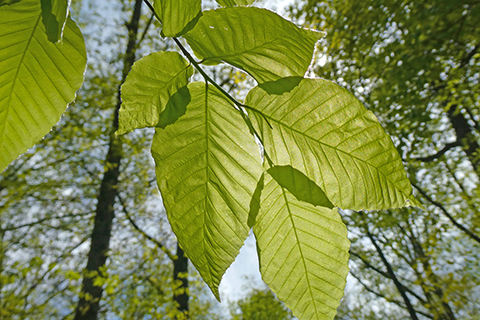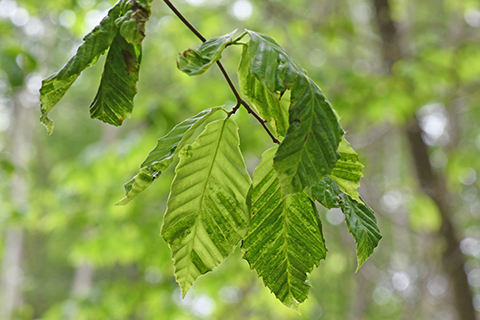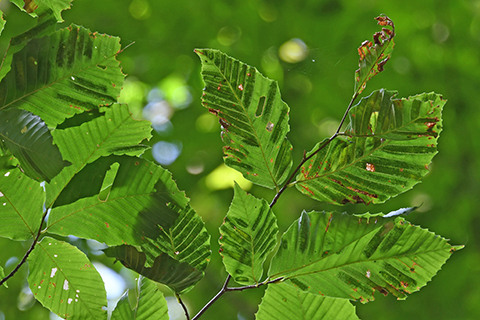Researchers are tracking a newly found disease killing American beech trees that has spread from Ohio throughout Pennsylvania and on through New England.
American beech trees (Fagus grandifolia) are common in Pennsylvania’s forests.
They are known for smooth, light gray skin-like bark and dense, hard wood. They can grow nearly 40 meters tall and live up to 400 years; and are a major component in many forests.
Beech leaf disease is a newly discovered, lethal sickness affecting beech trees. The symptoms of the disease often present as dark green bands between the veins of the tree’s lower leaves -- eventually spreading throughout the tree.
The damaged leaves fall off and the tree is forced to grow new ones. The energy cost of this regrowth eventually results in the death of the tree.
The disease has the potential to drastically change the deciduous forests of the eastern United States, where a separate threat -- beech bark disease -- has yet to be found.
In areas where beech bark disease is already causing dieback and mortality, beech leaf disease will compound these issues.
The disease affects the native American beech, as well as the commonly planted European beech.
The estimated economic and environmental cost of the loss of the beech in Ohio alone is $225 million and unfortunately the disease has no known cure.
What Causes it?

Leaves of healthy beech tree
An invasive nematode is believed to be responsible for the disease. These microscopic worms are present in the leaves and buds of infected beech trees.
Nematodes are among the most abundant creatures on earth and often occur as parasites in animals and plants, or as free-living forms in soil, fresh water, and marine ecosystems.
In the case of the ones that prey on beech trees, their feeding causes dark bands that are visible in the leaves.
The nematodes are most harmful to younger trees, which can perish in less than five years after the first signs of damage. In places where the disease is established, it can prove fatal to 90 percent of saplings.
Detecting Beech Leaf Disease

Leaves of beech tree with beech leaf disease
Beech leaf disease can be identified by its distinct effect on the leaves. Early symptoms will include dark stripes between the veins on the leaves -- these may be visible when looking up through the canopy.
As the disease progresses, the leaves may become withered, curled, or develop a leathery texture. A heavily impacted tree may appear to lose some leaves or have sections of dead branches.
Other insects and pathogens can also cause leaf damage on beech trees. However, this damage is usually easy to distinguish from beech leaf disease.
Mites and aphids will feed on beech leaves and cause discoloration, but this is usually lighter in color compared to beech leaf disease.
Beeches also will naturally hold onto leaves into the winter. If you see a beech with brown leaves still attached in the winter, this is normal.
Still More to Learn

Beech leaf disease
Beech leaf disease research by various universities and state and federal agencies is ongoing.
This disease is relatively new and there is much to learn, such as:
- How the nematode spreads
- How rapidly the disease moves within a beech stand
- How to suppress the nematode population via chemical and fertilizer treatments
- The correlation between nematode population and disease severity
- Disease ecology and practical management options
Some researchers report that when they examined diseased beech leaves, the tissues contained a fungus and some bacterial species also carried by the invasive nematode.
That suggests both the nematode and a pathogen it carries could be contributing to the disease.
Researchers haven’t identified a practical, cost-effective treatment for the disease, though some beech appear to be resistant.
The future of our beech trees could rely on using those disease-resistant trees to breed new resistant strains, but that will require a long time to achieve.
If you think a beech tree on your property might be infected with beech leaf disease, reach out to your local service forester.
Additional information about forest insects and diseases can be found at the DCNR website.